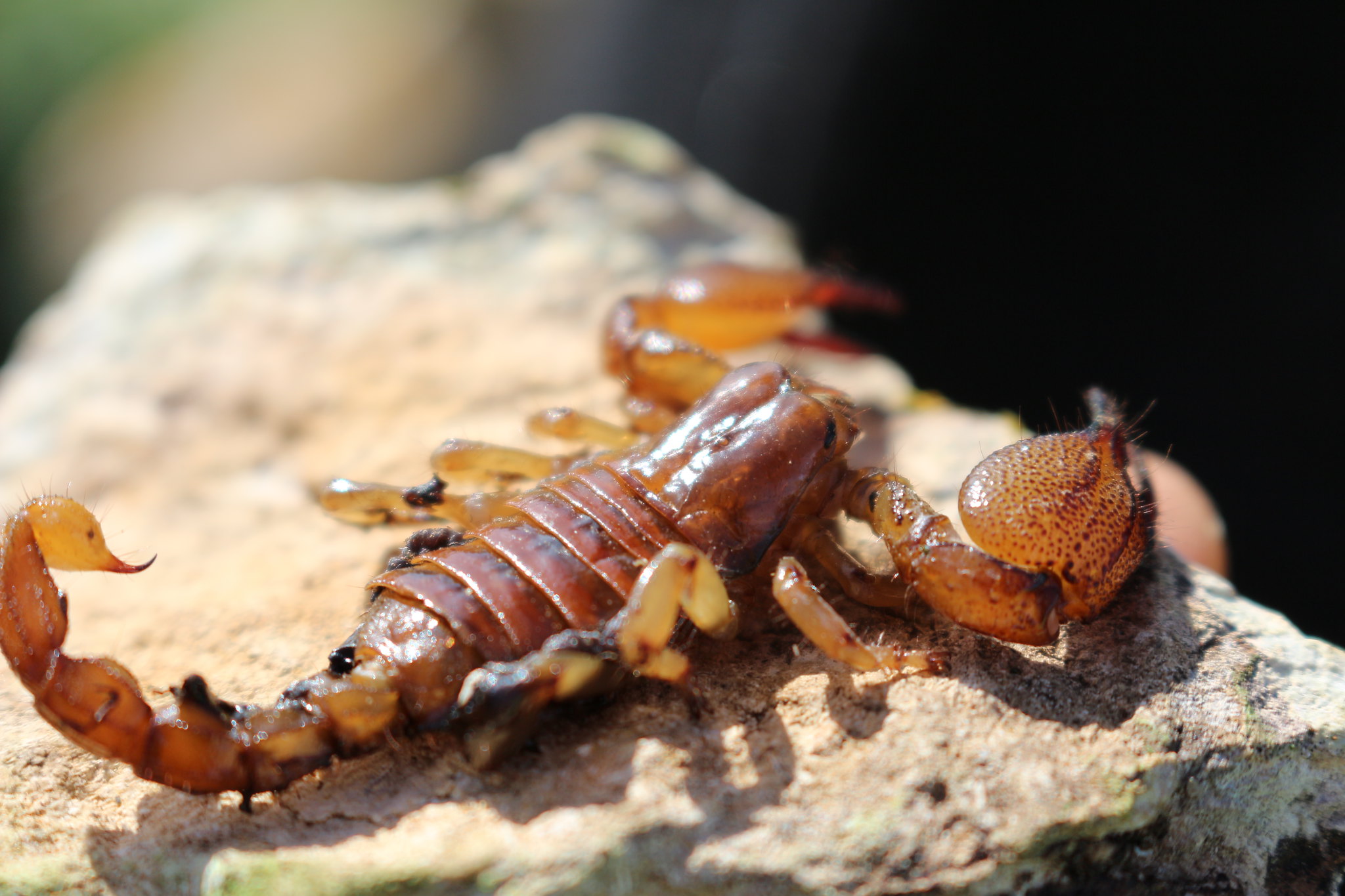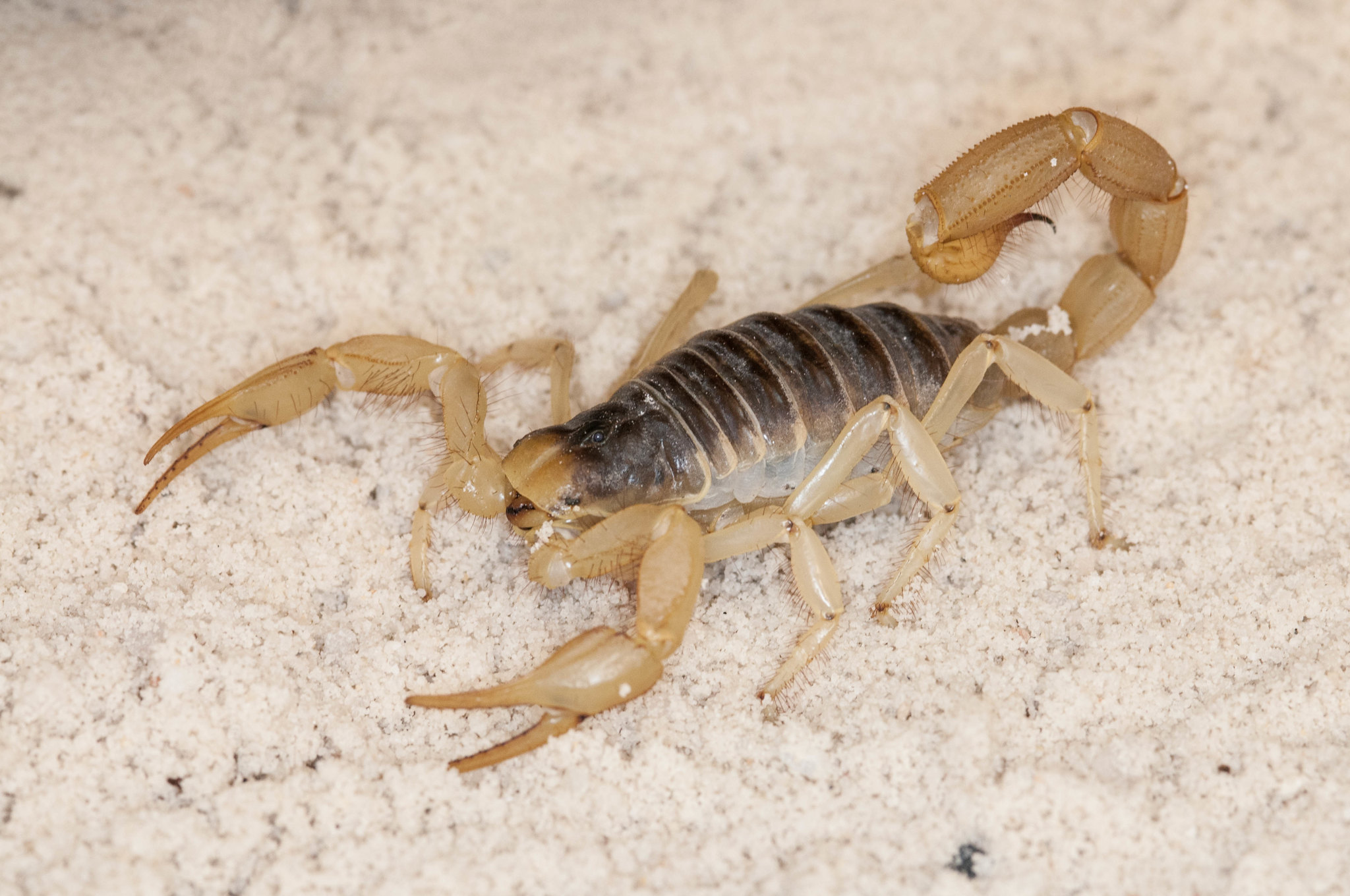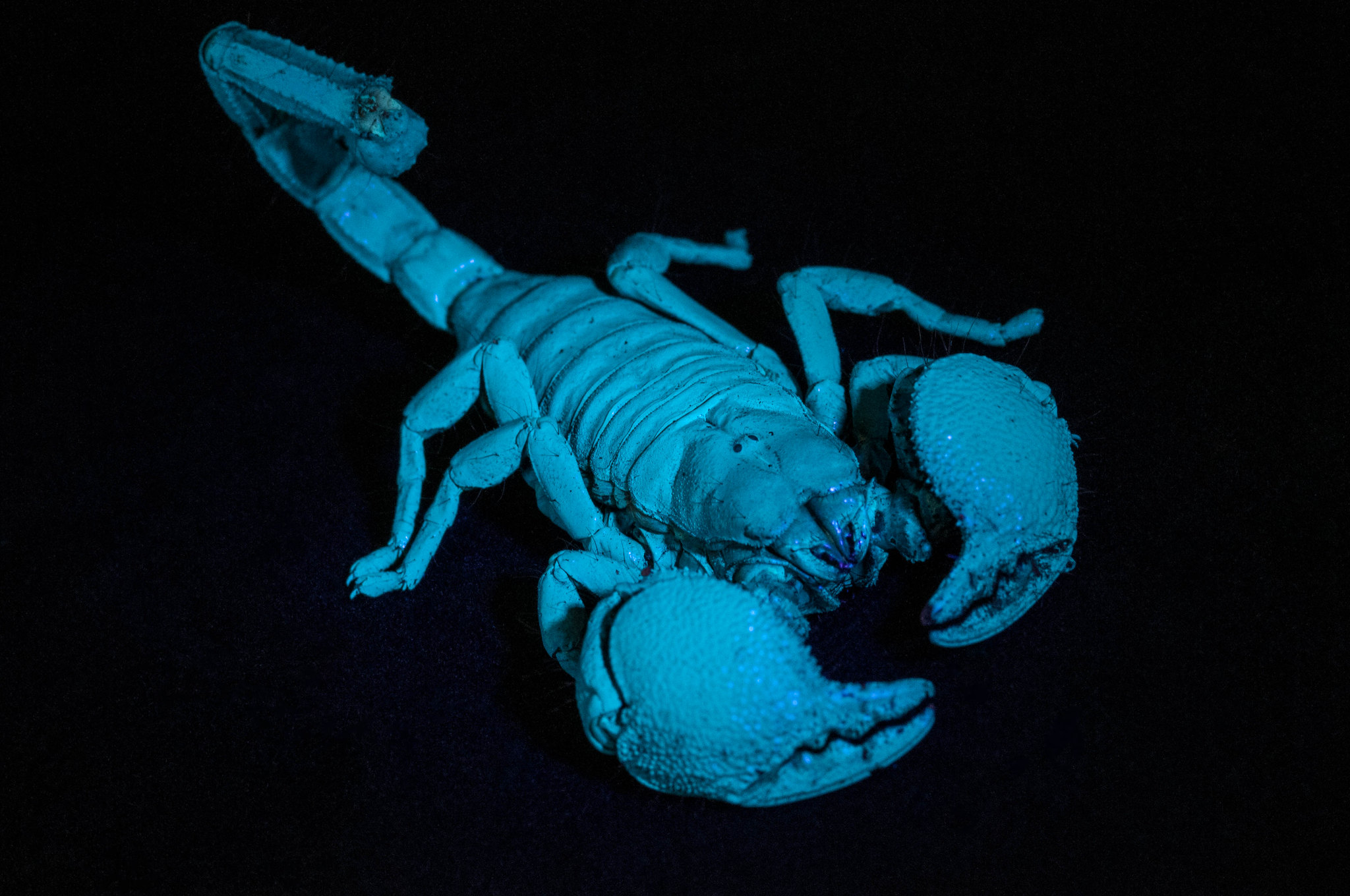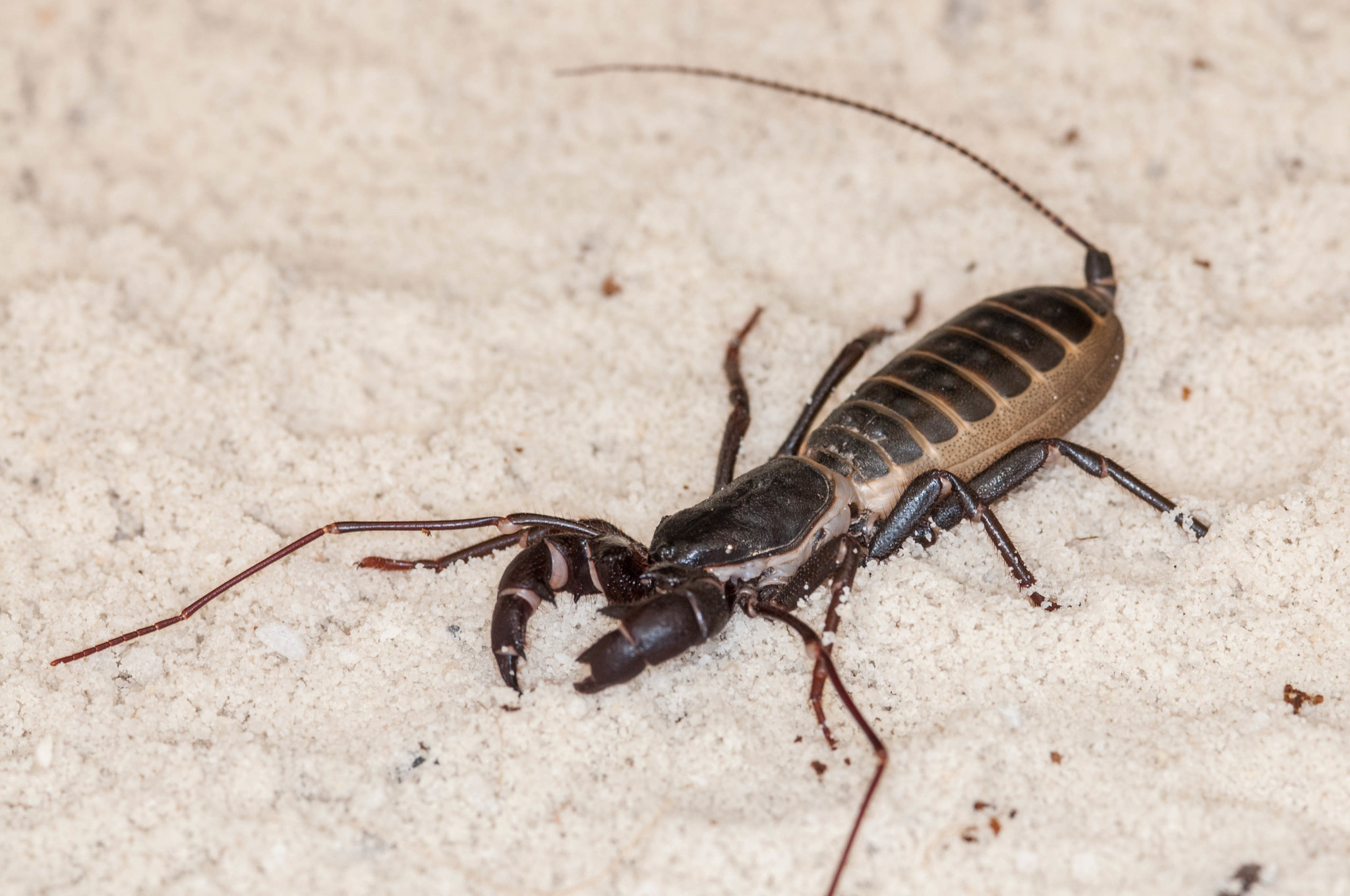Scorpions
Scorpions are predatory arachnids of the order Scorpiones. They have eight legs, and are easily recognized by a pair of grasping pincers and a narrow, segmented tail, often carried in a characteristic forward curve over the back and always ending with a stinger. They mainly live in deserts but have adapted to a wide range of environmental conditions, and can be found on all continents except Antarctica. All known species give live birth and the female cares for the young as their exoskeletons harden, transporting them on her back. The vast majority of species do not seriously threaten humans, and healthy adults usually do not need medical treatment after a sting. About 25 species (fewer than one percent) have venom capable of killing a human, which happens frequently in the parts of the world where they live, primarily where access to medical treatment is unlikely.

Scorpions
Common name: Scorpion
Taxonomy:There are currently twenty-two families containing over 2,500 species of scorpions organised within the following “Superfamilies”: Pseudochactoidea, Buthoidea, Chaeriloidea, Chactoidea, Iuroidea and Scorpionoidea
Distribution: Scorpions are found on all continents except Antarctica. Scorpions did not occur naturally in Great Britain, New Zealand and some of the islands in Oceania, but have now been accidentally introduced into these places by humans.
Venomous or poisonous?: Venomous
Interesting facts: Generally speaking, the venom potency and potential danger posed to humans can be estimated by the ratio between the size of the pincers at the front and the thickness of the tail at the back. This shows whether the scorpion generally hunts using its strength (size of pincers) or venom (thickness of tail). The first scorpions were taxonomically identified in 1758 by Carl Linnaeus, the “father of modern taxonomy”.

Buthid Scorpions
Common name: Buthid scorpion, Fat-tail scorpion, Bark scorpion
Family: Buthidae
Subfamilies: Buthinae, Centrurinae, Isometrinae, Tityinae
Distribution: They occur in the warmer parts of every major landmass on Earth, except on New Zealand
Venomous or poisonous?: Venomous
Interesting facts: Scorpions from the genera Androctonus, Centruroides, Hottentotta, Leiurus, Parabuthus, and Tityus are notorious for their strong venom. Human fatalities have been recorded from fewer than two dozen species. Studied Buthidae toxins have been found to hyperpolarize nerves and slow inactivation, causing painful nerve firing that can last for hours. Some notoriously dangerous scorpions include Leiurus quinquestriatus (“Deathstalker”) and Androctonus, which translates in English to “Man-killer”. Despite the risks of keeping such potentially dangerous venomous species in captivity, Buthid scorpions are frequently found in the exotic pet trade, although many countries require a licence to keep them.

Scorpions and UV light
Scorpions glow a vibrant blue-green when exposed to certain wavelengths ranges of ultraviolet light such as that produced by a black light, due to fluorescent chemicals such as beta-carboline in the cuticle. Accordingly, a hand-held ultraviolet lamp has long been a standard tool for nocturnal field surveys of these animals. Fluorescence occurs as a result of sclerotization and increases in intensity with each successive instar. This fluorescence may have an active role in the scorpion's ability to detect light.
Vinegaroons
Common name: Vinegeroon
Order: Thelyphonida
Subfamilies: Hypoctoninae, Mastigoproctinae, Thelyphoninae, Typopeltinae, incertae sedis
Distribution: Tropical and subtropical areas excluding Europe and Australia
Venomous or poisonous?: N/a
Interesting facts: Vinegeroons are not true scorpions but rather “whip scorpions”, so called due to their similarity in appearance to real scorpions but with a long, thin, “whip-like” tail. When attacked, Vinegeroons discharge an offensive, vinegar-smelling liquid, which contains acetic acid.